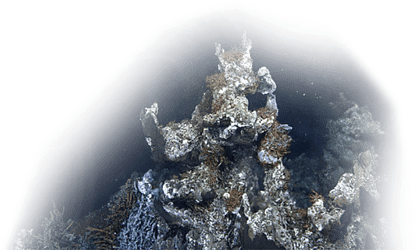Progress towards creating the first neutrino telescope in the Pacific Ocean took another step forward with the project’s instrumentation being shipped to Germany for pre-launch checks.
Research has shown that the deep ocean is the perfect environment to study neutrinos, which are elusive subatomic particles produced by nuclear reactions in the sun, radioactive decay, and exploding stars. A five-year project has concluded that Cascadia Basin–the deepest site in ONC’s NEPTUNE observatory off west Vancouver Island–is a suitable host location for a large-scale neutrino telescope.
Since 2018, the Pacific Ocean Neutrino Experiment (P-ONE) has been testing Cascadia’s suitability using sophisticated light sensors placed on long mooring strings. Neutrino particles can only be observed by the light they emit when they collide with other particles, making this quiet and dark 2.6 kilometre deep site an ideal location when paired with ONC’s observatory. The sensors have been successfully recording and sending this data to ONC’s Oceans 3.0 data portal, where they are accessible to the project’s international team of scientists.
The three moorings (a 500-metre string and two 150 metre in length) were disconnected and recovered during last month’s summer 2023 #ONCAbyss expedition, and the instruments have this month been shipped to Germany for analysis of how the hardware held up. The deep ocean can put immense physical stress on the sensor equipment including corrosion and biofouling.
Dr. Elisa Resconi, an astrophysicist at the Technical University of Munich and a spokesperson for the P-ONE project, says the planned neutrino telescope will offer researchers a larger window to observe the universe.
Fun Fact:
Travelling through normal matter—including the centre of the Earth and human bodies—at nearly the speed of light, non-interacting “ghost particle” neutrinos with no electrical charge are difficult to study and detection requires large and very sensitive instruments.
